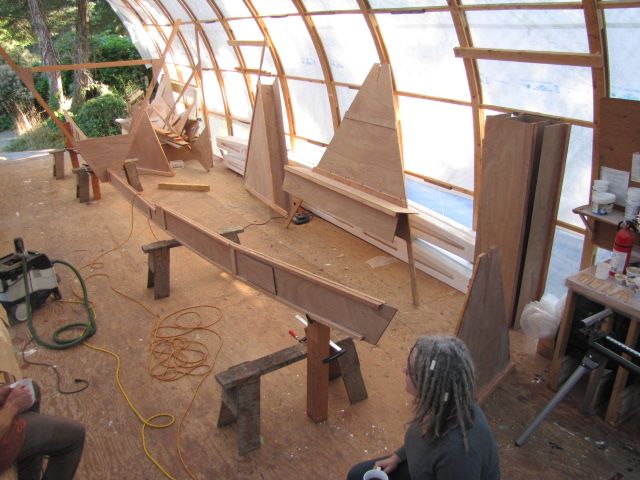The galley, though, will not be complicated. We're not planning for refrigeration. We don't want through-hull fittings, so the sink will be a counter-mounted bucket. Our firm sailing plans focus on the Strait of Georgia, so we're not equipping the boat as if we're heading offshore on launch day.
 |
| Looking towards the bow on the day of the turn. Photo by Virginia Hayes |
 |
| The interior on turn day. Trevor had done some interior sanding while it was still upside down. Photo by Virginia Hayes.  |
We didn't like the results in the original. The sole seemed unpleasantly springy underfoot -- there was a lot of flex.
So this time, Trevor built some support pieces in underneath and used these narrower panels. It's altogether more satisfactory, and gives us the thickness of the plywood more headroom. This is minor for most and really irrelevant for us, but we're hoping the tall brother-in-law's neck will now be able to stand upright.
 |
| First sole. In this picture, you can't see the ledges visible in the picture above, since the sole overlaps them. |
Here are a couple of final pictures -- the first hull's companionway, with packing pieces, and the second hull's companionway, without.
 |
| The companionway is on the right in this picture. It's hard to see the packing pieces -- but you can see the lack of gap between the stringers and the companionway. |
 |
| Here's the companionway on the second hull. Here you can see the shadows below the vertical piece -- these are the gaps that on hull #1 were filled with packing pieces. |
With the new year and the return of the light, we're anticipating more hours spent building. Stay tuned -- galley mockup is coming soon.


















































